What to Do If Sparks Are Coming Out of Your Chimney
Fireplaces are cozy, stylish, and can add value to your home while serving as the perfect hangout spot during the cold weather months. If a fireplace is not safe, however, it will hardly be considered a relaxing part of your home.
At Boston’s Best Chimney, our priority is to keep your chimney safe. In fact, our technicians are certified by the Chimney Safety Institute of America, a certification designed to help homeowners find “reliable, experienced, highly-trained chimney and venting professionals.” Chimney sweeps and inspections are two of the many services that we offer to help homeowners to be sure that their chimneys are in working order. Click here or call (781) 893-6611 to schedule an appointment with us.
Today, we’ll go over what you should do if you see sparks coming out of your chimney and we’ll give you some chimney safety tips to help you avoid dangerous chimney situations.
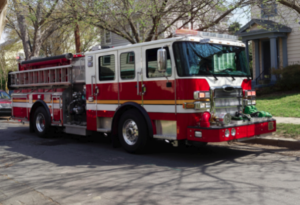 What To Do If There Are Sparks Coming Out of Your Chimney
What To Do If There Are Sparks Coming Out of Your Chimney
When it comes to chimney safety, it is always best to err on the side of caution. If you see sparks coming out of your chimney, it is safe to assume that you’re experiencing a chimney fire. Call the fire department and make sure that everybody is out of the home. Extinguishing the fire in the fireplace before leaving is not a bad idea – just be sure not to close the damper prior to leaving.
It is best to let the fire department take over to assess the situation and put out the internal fire if needed. Even if you are not sure if your chimney is on fire, or if the fire goes out before the fire department arrives, calling the fire department is still the best choice.
After the incident is over, be sure to call a chimney company to have your chimney inspected before using it again as excess heat generated during a chimney fire can produce cracks in the flue lining.
What Causes Chimney Fires
One of the main causes of chimney fires is the build up of creosote, which is flammable and will quickly compromise the safety of your fireplace. Check out our blog on creosote buildup to learn more about the different types of creosote and the effects of creosote on your chimney.
Also, animal nesting inside of your chimney can also lead to fires beginning when embers come in contact with the nests. That is why every homeowner with a chimney needs a chimney cap to prevent animals from making their homes inside of your chimney.
How to Prevent Chimney Fires 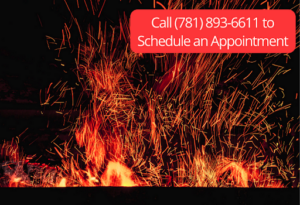
We recommend having your chimney inspected and swept annually. This will prevent creosote build up and ensure that your chimney is in a proper state to use each winter. There are also some steps that you can take to stay ahead of fireplace maintenance, such as cleaning your fireplace’s interior, getting rid of soot and stains, and implementing safety measures such as installing a CO detector and checking your smoke alarm ’s batteries.
In addition, it is important to only burn seasoned, untreated wood that has dried out for at least six months in your fireplace.
These steps are the best way to ensure that you don’t experience a chimney fire. If you have questions on chimney safety or if you would like to schedule a chimney inspection or sweep, click here or call (781) 893-6611 to get in touch with our team.
The post What to Do If Sparks Are Coming Out of Your Chimney appeared first on Boston's Best Chimney.
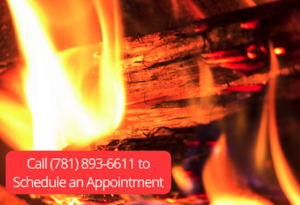


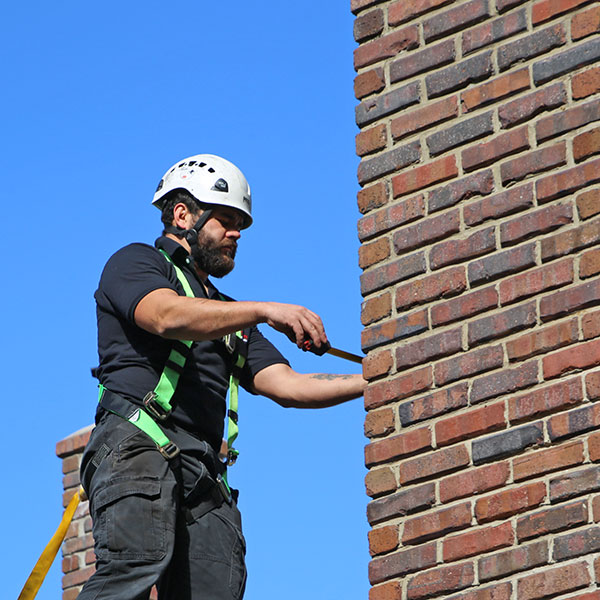 Task #1: Have your chimney inspected once a year
Task #1: Have your chimney inspected once a year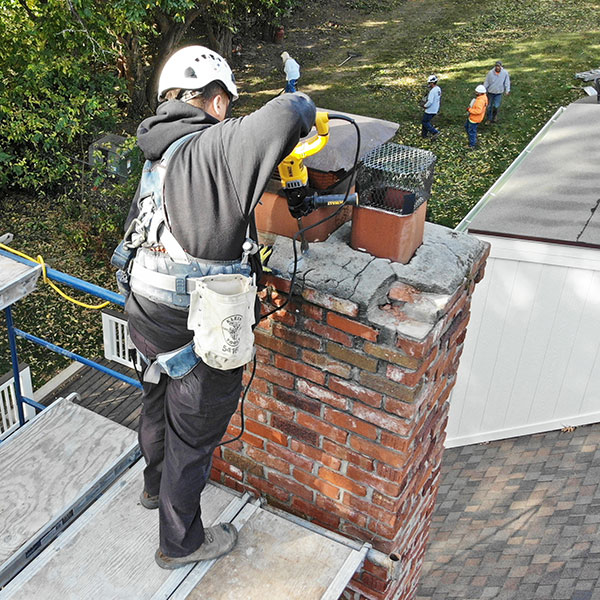 Damage to chimneys and their components doesn’t get better on its own. Rather, it progresses to the point that the chimney is no longer safe to use or live around.
Damage to chimneys and their components doesn’t get better on its own. Rather, it progresses to the point that the chimney is no longer safe to use or live around.
 Gas fireplaces have become increasingly popular in homes throughout the Kansas City KS/MO area. It’s not just a feature found in newer homes. Many homeowners residing in older homes have converted to
Gas fireplaces have become increasingly popular in homes throughout the Kansas City KS/MO area. It’s not just a feature found in newer homes. Many homeowners residing in older homes have converted to  The Gas Flame is Low
The Gas Flame is Low The crown of the chimney. The crown is the cement border protecting the opening of the flue. As rainwater falls from the cap, it lands on the crown. The crown, in turn, directs the water away from the chimney masonry, preserving the structure.
The crown of the chimney. The crown is the cement border protecting the opening of the flue. As rainwater falls from the cap, it lands on the crown. The crown, in turn, directs the water away from the chimney masonry, preserving the structure. The smoke chamber. Just above the firebox but below the flue entrance, there is a space where the smoke mingles with heat to raise the flue on the draft created by the fire. The smoke chamber features a shelf (called the smoke shelf) that prevents the smoke from falling back into the fireplace and might push into the home. The chamber is shaped like an inverted funneling, directing the smoke up the flue once mixed and heated.
The smoke chamber. Just above the firebox but below the flue entrance, there is a space where the smoke mingles with heat to raise the flue on the draft created by the fire. The smoke chamber features a shelf (called the smoke shelf) that prevents the smoke from falling back into the fireplace and might push into the home. The chamber is shaped like an inverted funneling, directing the smoke up the flue once mixed and heated.